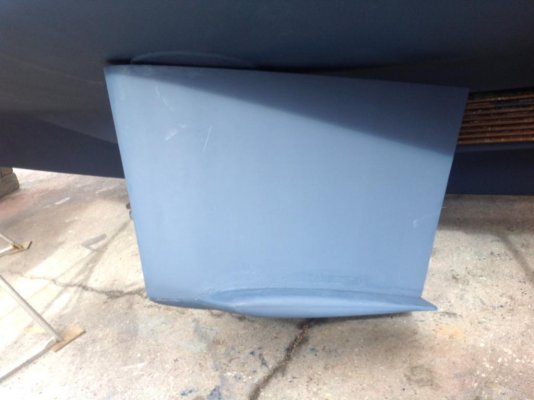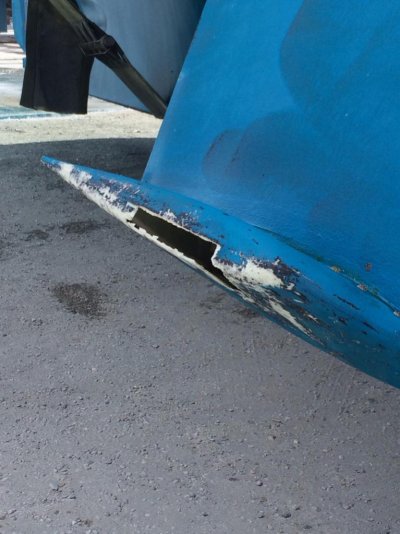Isn't the spillage off the end of the fin present all the time, whether the fin is deflected or not? So a winglet helps reduce spillage and associated drag whether the fin is defected or not, right?
If the boat is moving in perfectly calm water and not rolling or pitching at all, the pressure on each side of a symmetrical fin will be balanced and the only disturbance at the tip would be that created by the flat plate area that tip presents to the water flow. It would be minimal and unstable, and for our purposes in this discussion, it twists and burbles unpredictably. Call it a wash.
Does the spillage and associated drag for an undeflected fin go up as speed increases? I would assume it does.
See the above. The drag goes up with speed. Without going into the very complex factors involved, it is safe to just say that the drag increases proportionally to the square of the speed ... high speed makes very high drag.
And I presume the spillage and associated drag increases as deflection increases, right? So the winglet helps more as deflection increases?
See above. Drag increases as lift increases and lift increases with angle of attack until a certain point.
Now of course the down side is that the winglet itself creates increased drag.
Yes, it presents a form and a surface to the water, form is the area of the winglet and surface is the skin resistance to water flow.
So at higher speed where there is less deflection required for stabilization, you are saying the spillage drag is less than the drag of the winglet itself? Calculating that out to figure out the cross-over point is way over my head.
Proportionally, yes. A great deal of force can be created at a much lower angle of attack (angle of fin relative to the direction the water is flowing) at high speeds. This means that the fin is operating to its best lift over drag ratio. But, in real life since the fins are attached to a boat that is moving (or can) move in 6 different directions plus the fact that the fin is moving in opposition to roll, spillage is a rapidly moving target.
What I don't understand is that an airplane wing flying at cruise speed seems to be more like a fin with minimal deflection at high speed. Where a fin at slow speed with lots of deflection seems more like a plane taking off and landing with flaps down for more lift. But planes presumably have winglets for cruising, not for landing and take off?
At cruise the wingtip vortices represent a significant source of drag, something around 20 percent or so. During takeoff and landing where both lift and drag are very high (at cruise there is only enough lift to keep the plane flying - at takeoff there is enough "extra" lift to put some distance from the ground) and wingtip devices that prevent air moving from beneath the wing to the upper surface help shorten takeoff runs, load more weight, and climb faster. I think Baker is the subject matter expert in this area, maybe he will chime in.



